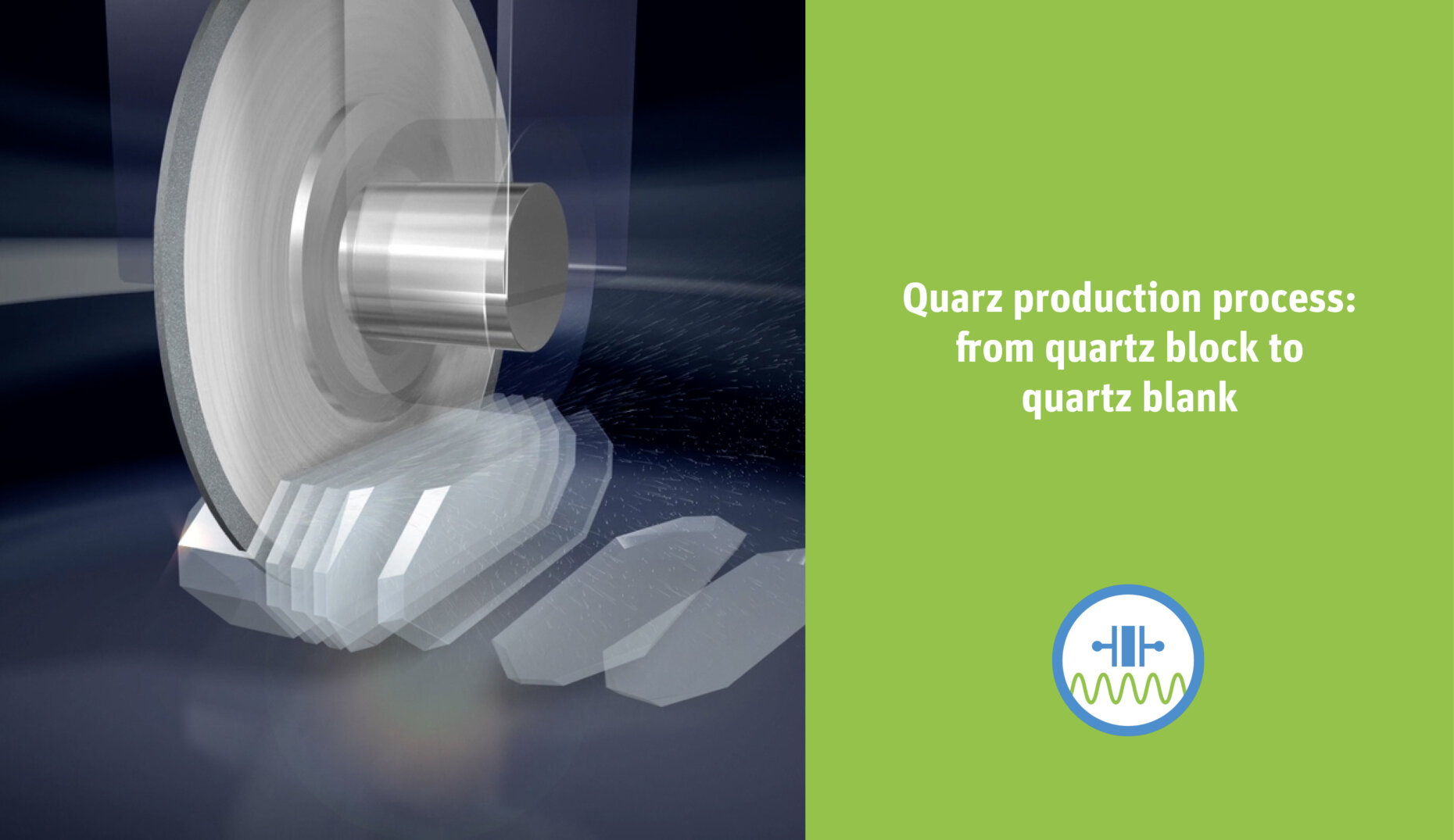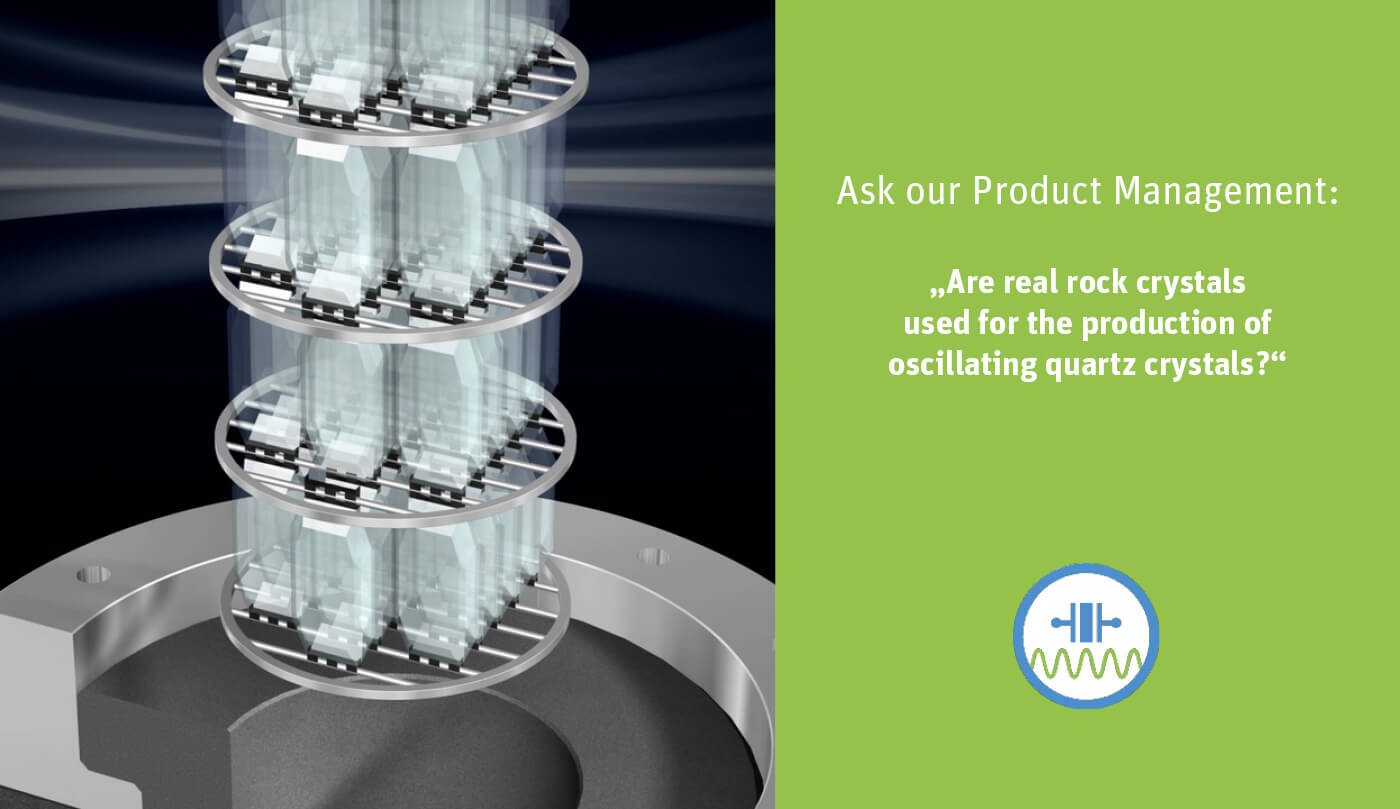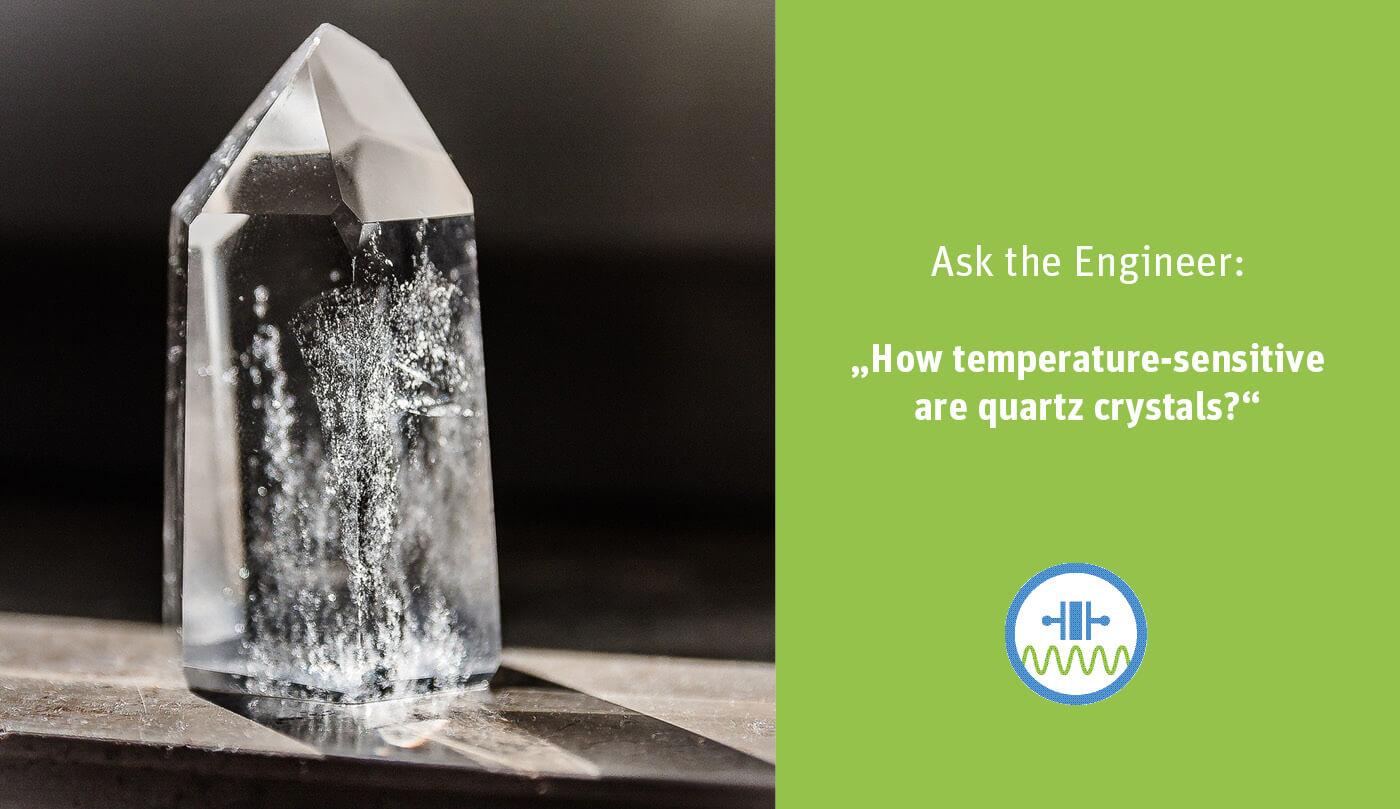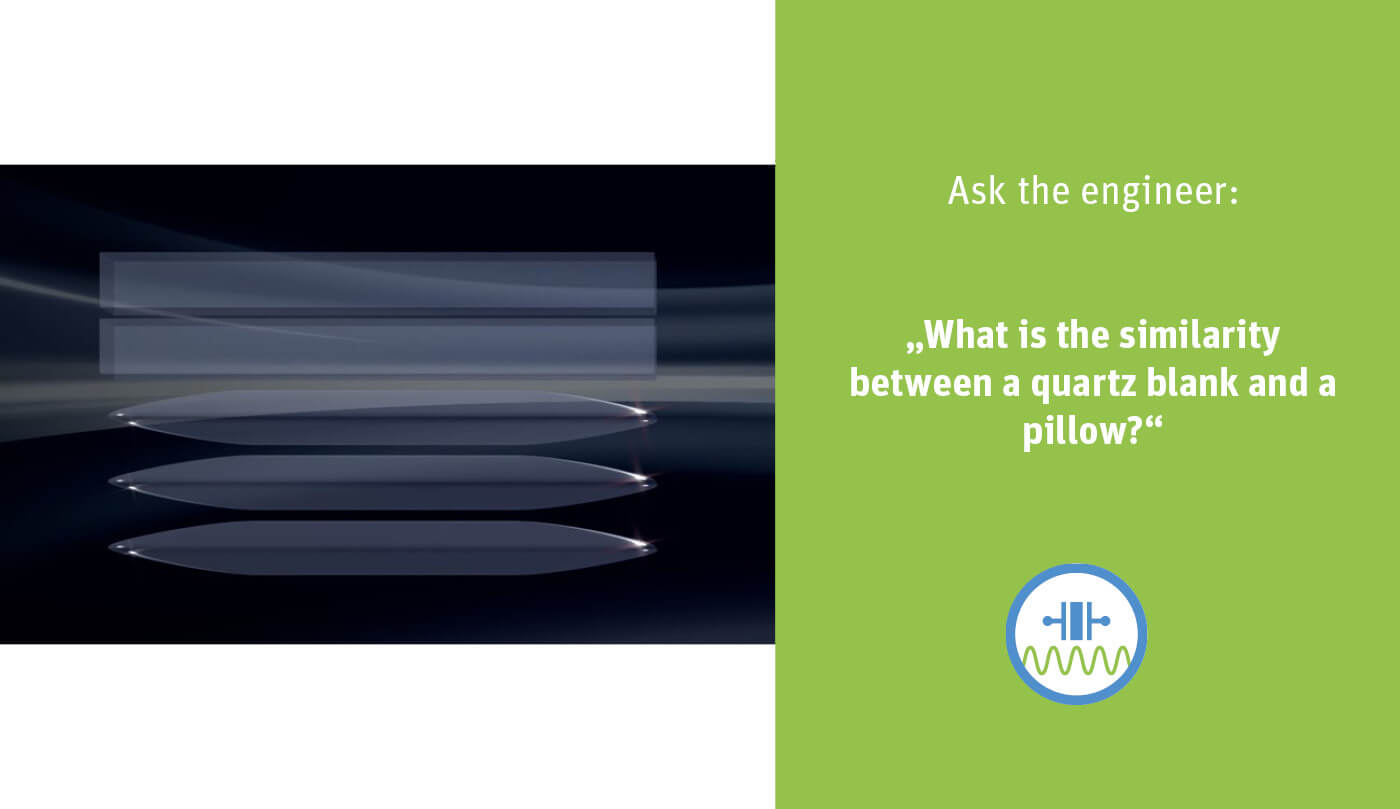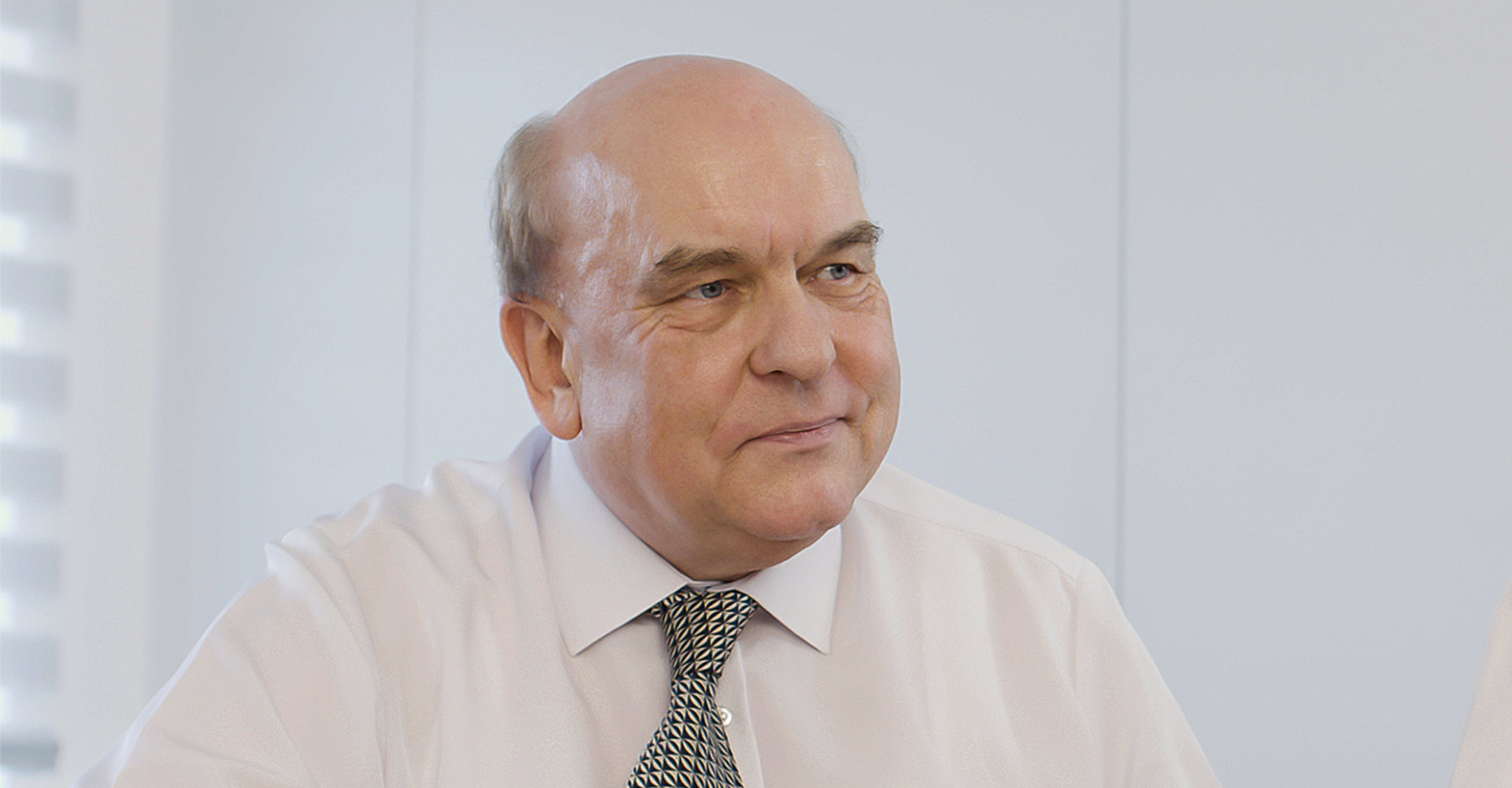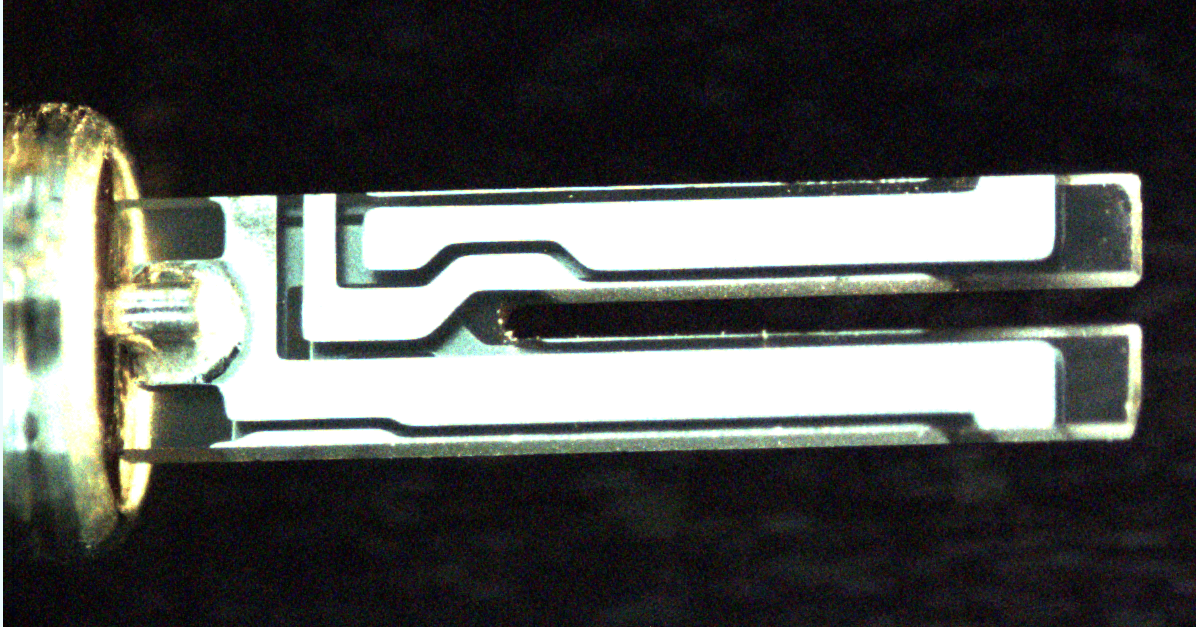Quartz production process: from quartz block to quartz blank
The previous blog post entitled: Ask the Product Manager: Are real rock crystals used for production of oscillating quartz crystals? covered the initial stages in the production of these small clocks. Quartz is artificially grown in autoclaves, reaching a weight of several kilos. From this point, however, we are still a few production stages away
- Published in Frequency Control Products
Ask the Product Management: Are real rock crystals used for production of oscillating quartz crystals?
SiO2 – this is the chemical name of the base material for oscillating quartz crystals. The formula shows that it is composed of only two elements: silicon and oxygen. We also find SiO2 in its crystalline form in the nature: as natural rock crystals. Here, the question arises: Are real rock crystals used for production
- Published in Frequency Control Products, Uncategorized
Ask the Engineer: how temperature-sensitive are quartz crystals?
Nowadays, Christmas without quartz crystals is unimaginable! Why? Even the modern time switches for outdoor lighting need a quartz to have an accurate time base. Also, a lot of our gifts are based on state-of-the-art electronics. Cell phones, smartwatches, PCs – they all need highly accurate frequency giving components to communicate with each other. Without
- Published in Frequency Control Products
What is the similarity between a quartz blank and a pillow?
Do you already know the similarity between a quartz blank and a pillow? Exactly! Both have the same shape. The so-called “bevelling” or “contouring” in the production process of quartz blanks results in the characteristic lens shape of quartz blanks. “This procedure is mainly used for ‘thicker’ blanks, which are in the low frequency range,
- Published in Frequency Control Products
TCXO: How it works and why
A TCXO is a temperature-compensated crystal oscillator that is used whenever particularly high stability within a variant temperature environment is required, i.e. when the frequency deviation of the oscillator must be minimal over its entire operating temperature range. Oscillators using AT quartz crystal plates, so called “blanks”, are the most economical solution to create a
- Published in Frequency Control Products, Frequency Control Products
No Sign of Saturation – Even After 65 Years
The Jauch Group has grown alongside their frequency control products and – with their early entry into the battery technology market – they are now working in two promising growth areas. “On the 65th anniversary of the company, the signs still point to further expansion,” said Managing Director Thomas Jauch. 65 years ago, Herbert Christian
- Published in The Company
Why Do Tuning Fork Crystals Always Have A Frequency of 32.768 kHz?
The tuning fork crystal as it is used in watches is something like the “classic” among the quartz crystals. Its frequency is always exactly 32.768 kHz. But why this value? The answer to this question can be found in the history of quartz crystals. Bell Telephone Laboratories, the former research department of today’s telecommunications group
- Published in Frequency Control Products


 Deutsch
Deutsch 